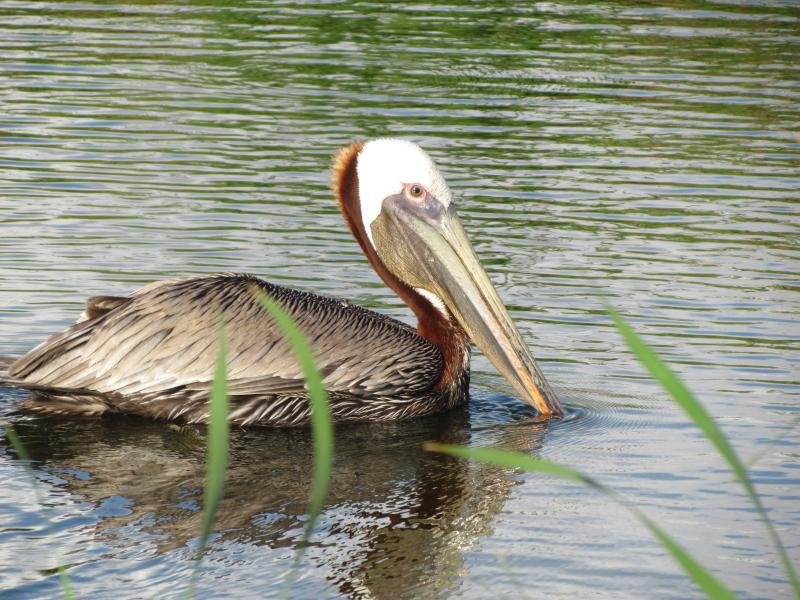We enjoyed experiencing and watching the solar eclipse recently using a variety of safe techniques (including the use of some eclipse glasses that arrived at the last minute, courtesy of our friend Bob Wallis). We were curious to see if, here where the eclipse was only at about 50 percent coverage of the sun, we would notice birds or wildlife reacting to the event. We can’t say that we did notice anything different, and we look forward to hearing any interesting bird behavior stories that may roll in from areas that experienced the total or near-total eclipse.
Meanwhile, there is an unrelated but very interesting bird story of another sort. Earlier in the summer, birders spotted a brown pelican roaming the southern Maine coast. Apparently it moved back and forth, over the course of more than a month, between southern Maine and the New Hampshire coast. It wouldn’t surprise us if it continues to be seen into the early fall.
Brown pelicans were hard hit in earlier times. First, they were killed by people who thought that the birds competed with humans for fish. Later, their populations were devastated by the eggshell-thinning effects of a build-up of DDT in the food chain. In fact, brown pelicans were in such dire straits that they were on the endangered species list until relatively recently. Fortunately, with protections and the elimination of DDT from use in the U.S., brown pelicans have rebounded and are now a common sight along the southern Atlantic Coast and Gulf Coast of the U.S. Brown pelicans have also been pushing steadily northward along the Atlantic Coast, now nesting north to Delaware and even attempting nesting a few times, unsuccessfully, in coastal New Jersey. In recent years, brown pelicans have become more regular in summer along the shores of New York’s Long Island, and while still relatively rare, sightings have increased in Connecticut and Massachusetts as well.
Maine has had some interesting history with brown pelican records. There are four listed in Ralph Palmer’s book “Maine Birds,” one from 1826 and the others from 1914 and 1922. The Maine Bird Records Committee lists the next one more than 80 years later, on June 16, 2007 in Harpswell. An unusual saga took place in Maine with brown pelicans when one was reported captured in Bar Harbor in 1900. Although the bird was exceptionally tame, the possibility of it having been a captive bird was apparently not considered initially at the time, and the bird was made into a taxidermy mount and given to the Maine State Museum. Later it was discovered that the bird was one of three that had been brought up to Castine as young birds from Florida as pets of a sort. Of course this discounted the Bar Harbor record from being considered the first specimen of a naturally occurring brown pelican in the state.
We have written previously in this column about the increasing numbers of more southerly, warmer water fish being taken by puffins and the problems this has sometimes caused because the fish are not suitable for puffin chicks to easily swallow. Brown pelicans (which are only found on salt water) may be following these and other preferred warmer-water fish northward into New England. Thus, we may be seeing more brown pelicans in the future.
Jeffrey V. Wells, Ph.D., is a Fellow of the Cornell Lab of Ornithology. Dr. Wells is one of the nation's leading bird experts and conservation biologists and author of the “Birder’s Conservation Handbook.” His grandfather, the late John Chase, was a columnist for the Boothbay Register for many years. Allison Childs Wells, formerly of the Cornell Lab of Ornithology, is a senior director at the Natural Resources Council of Maine, a nonprofit membership organization working statewide to protect the nature of Maine. Both are widely published natural history writers and are the authors of the book, “Maine’s Favorite Birds” and the just-released “Birds of Aruba, Bonaire, and Curaçao.”






























